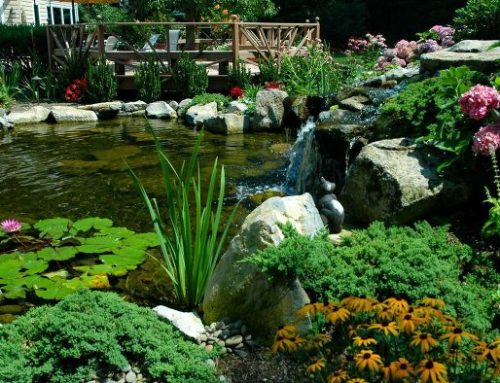So far on Long Island, we’ve not had many snow events this winter. But if predictions hold true, the worst is yet to come. Such snow and ice events, frequently followed by a warm thaw in our neck of the woods, demands outdoor construction materials that will hold up to these freeze/thaw conditions.
Let’s Begin with Patio Materials
Techo-Bloc pavers, for example, are engineered in Canada where extra paver strength is essential.
“As long as these pavers are properly installed, Techo-Bloc stones will remain adaptable, even, and stable for years,” says our own Dave Stockwell.
The joints between the pavers, he explains, create flexibility, which avoids cracking, while still allowing subtle movement. Techo-Bloc pavers are nearly three times stronger than poured concrete, having a minimum compressive strength of 8,000 psi and a maximum of five percent water absorption.
Like concrete and asphalt pavements, these pavers can be plowed and shoveled. Actually, the edges and joints around the pavers assist in melting snow and ice, explains their manufacturer. Using de-icing salt (sodium chloride or calcium chloride) to remove snow and ice will not harm these paving stones they say.
Another reason Deck and Patio loves these paving stones is they look so natural. Instead of one-sized bricks being placed throughout an entire patio, retaining wall, or driveway, a Techo-Bloc kit — with its varying shapes — ensures an attractive design, whether “random” instead of straight lines and flat images, or in a “running block” pattern.
“These products are available in pavers, slabs, walls, for facing outdoor features such as fire pits, edging, and include permeable materials,” says Dave.
Now to Capped Composite Decking
Capped composite decking boards are made of materials and a cap that resist moisture. Fiberon’s, for example, includes a “cover” that provides added protection against the elements and everyday living.
“Most reputable capped composite manufacturers produce superb products that are stain, insect, mold and splinter resistant, although length of warranties may differ.” adds Dave.
“Even with capped composite durability, it is important, to remove any existing snow from your deck after a snow/ice event. It’s also best not to use metal shovels to do this. Choose plastic for snow removal.”
The Director of Marketing Communications at Fiberon Decking suggests not using sand to remove ice and snow because that can mar a deck’s surface; if the snow is light, a broom is a good choice, or, again, a plastic shovel. If a de-icer is really necessary, choose rock salt that is labeled as not harmful to asphalt or grass, then sweep the used rock salt into the trash and rinse the deck off to remove any residue. This is especially important if you have pets.

Removing Snow from Your Deck
The most important aspect to outdoor winter enjoyment is to remove any existing snow.
So! Choose the right materials and remove the snow from your decking, says Dave Stockwell, and you won’t worry if predictions about the polar vortex turn out correct. Indeed, let it snow…let it snow…let it snow. Enjoy this fun video:









Leave A Comment
You must be logged in to post a comment.